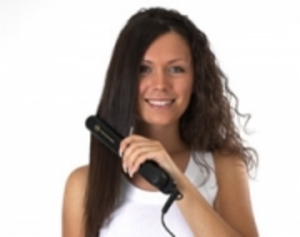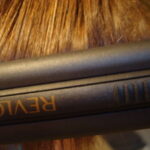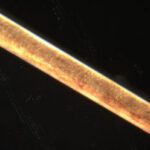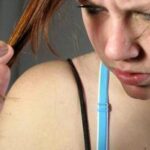If you have curly, unruly and frizzy hair, then you are probably familiar with the daily battle in the bathroom to keep it under control. For years I started off my day with an arsenal of tools such as blow dryers, straightening irons, balms, and gels just to end up with a puffy, parched, frizzy mess a few hours later. I couldn’t understand exactly what I was doing wrong, but I knew that my hair was unhealthy, unmanageable, and in need of some serious help. While I received tons of valuable advice from great stylists in my area, my hair success was actually achieved through plenty of trial and error. The tips I am about to share with you can save you a whole lot of bad hair days-and money, too!
The first tip I would like to divulge is probably the most valuable, and one I wished I had listened to. Before you can utilize any products or tools to attain sleek results, you absolutely must start off with healthy hair. Think of your hair as a fine work of art-an artist wouldn’t make use of a canvas that wasn’t pure and fresh, would they? You cannot use products that help “mend” split ends. While these products may help condition, they only conceal frayed and ragged ends and do not have the power to actually “fix” your hair. Split ends need to be cut completely off–and not on your own! Only a good stylist who actually invests ample time in cutting your hair and has experience with curly locks can properly assess the damage and decide how much hair needs to be chopped. Cutting off hair is never fun since it only grows on average ¼ inch per month, but it is a necessity.
The next step you should take to acquire gorgeous hair is one that requires being honest with yourself. As much as you love sporting a new shade as often as your daughter’s weekly Girl Scout meeting, you have to ask yourself if you are engaging in what I like to call hair homicide. Is your hair much healthier when you aren’t excessively dying it? Do you dye your hair so much that you can no longer remember your natural hair color? If so, it may be time to evaluate how important this is to you, and how important having healthy hair is. While I love that new hue of auburn and those golden highlights as much as the next woman, I’ve found that my hair re-textured into a softness that I didn’t know existed when I swore off the dye.
Perms and relaxers can inflict the same harm, and I have even found that semi-permanent dye that claims to be gentle isn’t so, at least on my tresses. If you are determined to color for whatever reason, the best idea would be to go to a colorist who only touches up your roots as needed after initially dying. Curly hair in particular is generally more prone to damage due to the structure of its cuticle. When hair is healthy, the cuticle layers (seen only under a microscope) will appear to be in close, taut alignment. Unfortunately, for those of us with curly hair, the natural curvature of our strands causes the cuticle layer to always be lifted, therefore leaving our hair prone to breakage and damage, and also affecting the porosity, as well. When hair is damaged, it loses its ability to hold water and retain the natural oils that nourish and moisturize our hair.
Now that you understand the importance of keeping tresses trimmed and using only minimal dye on curly hair, I want to expand a bit on the topic of porosity and the reason why us curly-heads require tons of moisturizing. And yes, all of this information is necessary, since straightening those spirals can be the death of your hair if it isn’t in optimum condition. As mentioned above, curly hair in general has problems retaining good levels of moisture, which is, by the way 8%. Dry and damaged curly hair can mean the ultimate in being dehydrated, and intense conditioners as well as moisturizing shampoos are crucial. However, tons of money does not need to be spent in equipping your strands with the products it needs. In shampooing your hair, you should keep in mind that while the type and quality of shampoo does make a difference, how often you shampoo is key, too. I personally recommend washing your hair with a moisturizing shampoo containing lots of natural ingredients 2-3 times per week as opposed to everyday.
Unless you hair gets very oily, frequent washings are only drying your hair out needlessly. If you use lots of products, a clarifying shampoo containing citrus extracts should be used on occasion since product build-up can prevent essential moisture from penetrating the hair shaft. Next, in choosing a conditioner, it is best to choose a conditioner that is moisturizing rather than one that helps with de-frizzing. Conditioners that specialize in taming frizzies are often silicone-based. While silicone can be beneficial in helping to protect against heat damage (which we will get to later), excess silicone clogging up your strands can prevent hair from absorbing moisture, which is the most important thing that hair needs to stay healthy. Choose conditioners that contain proteins as well as natural oils such as jojoba oil, sweet almond oil, or coconut oil. Neutrogena makes a great conditioner containing natural oils. Purchasing these oils at a beauty supply store and adding a few drops to your conditioner may be a good idea, as well. Even a bit of olive oil, which many of us have in our homes, can wrap frayed strands in hydrating moisture.
Now, for the part that you’ve been waiting for-how to transform carefree curls into sleek and straight stands-without inflicting too much damage. It should be known that any stress on the hair will create some damage, and that no heat protectant or amount of conditioner can prevent that. However, following the steps above will assist in keeping your hair in tiptop shape. With that being said, on to the straightening process! Tools you will need to complete this process are: A hair dryer, a round brush (preferably containing natural rather than metal bristles), some bobby pins, a hair elastic or scrunchie, around 10 dollars worth of hair products, and possibly a straightening iron if you have very curly or hard to straighten hair.
- It is best to start off with clean, freshly conditioned hair. When you step out of the shower, do not towel dry your hair. Instead, squeeze out excess moisture and remember to be gentle with your delicate strands, especially when using a wide-toothed comb to remove any tangles that you may have (brushing too hard can break hair). A small amount of a leave-in conditioner of your choice is fine at this point, but you really don’t want to over-do it with products, especially if you decide that you are going to use a silicone-based serum. After removing some excess moisture and while your hair is still quite wet, apply the silicone-based serum evenly throughout your hair, but take care not to apply too much or you can end up with sleek but greasy-looking mess. Most manufacturers give a recommendation on the back of the bottle that is best to follow. While John Frieda’s Frizz Ease Hair Serum works great, I have also had success with Citre Shine Fresh Fusion Polishing Serum. You can purchase both for fewer than 10 dollars at any drugstore, and both really help to smooth frizz, seal the hair, and offer some thermal protection, as well. You can also buy heat protection sprays and those work wonderfully, too. While some drugstore brands are better than others, I can honestly say from my own experience that I have not benefited greatly from buying expensive, high-end hair products.
- After applying the serum and distributing it evenly throughout your hair, you should go on to pin up the top sections of your hair, using a scrunchie, bobby pins, a large hair clip, etc. Why would you do this? Blow drying your hair straight should be done in sections at a time, in order to dry hair thoroughly and prevent puffiness and frizz. While you can utilize a straightening iron to perfect your smooth style, this must be done last since straightening wet hair with an iron is, in essence, committing hair homicide. After pinning up the large majority of your hair to get it out of the way of where you want to blow dry, you should hold small (approx 1″) sections taut with the round brush, and aim the blow dryer down, on a medium-heat setting about 6 inches away from the section of hair. Remember to only take down more sections of hair from the pins when the hair you have dried is completely moisture free-damp hair will surely frizz. Blasting each chunk of hair with the cool setting of the blow dryer afterward helps “seal” your style and adds a burst of shine, as does rinsing your hair with cold water right before you exit the shower.
- Wahlah! After you have blow-dried all of your hair properly, you should be left with fairly straight and frizz-free locks. Depending on the coarseness and curliness of hair, it is sometimes helpful to go over freshly dried hair with a straightening iron, again in sections. Ceramic irons are best for your hair, but any one will do that job. An inexpensive shine or heat protection spray (as long as it isn’t water-based) can be helpful if it is necessary to complete this step. Important tip: NEVER hold the straightening iron in one spot for too long, as this will damage your hair immensely. Brush hair, style as usual, and enjoy your silky straight hair. Remember-repeat only a few times per week to minimize hair damage, and always consult with a stylist who is knowledgeable on the subject of those disobedient spirals.







